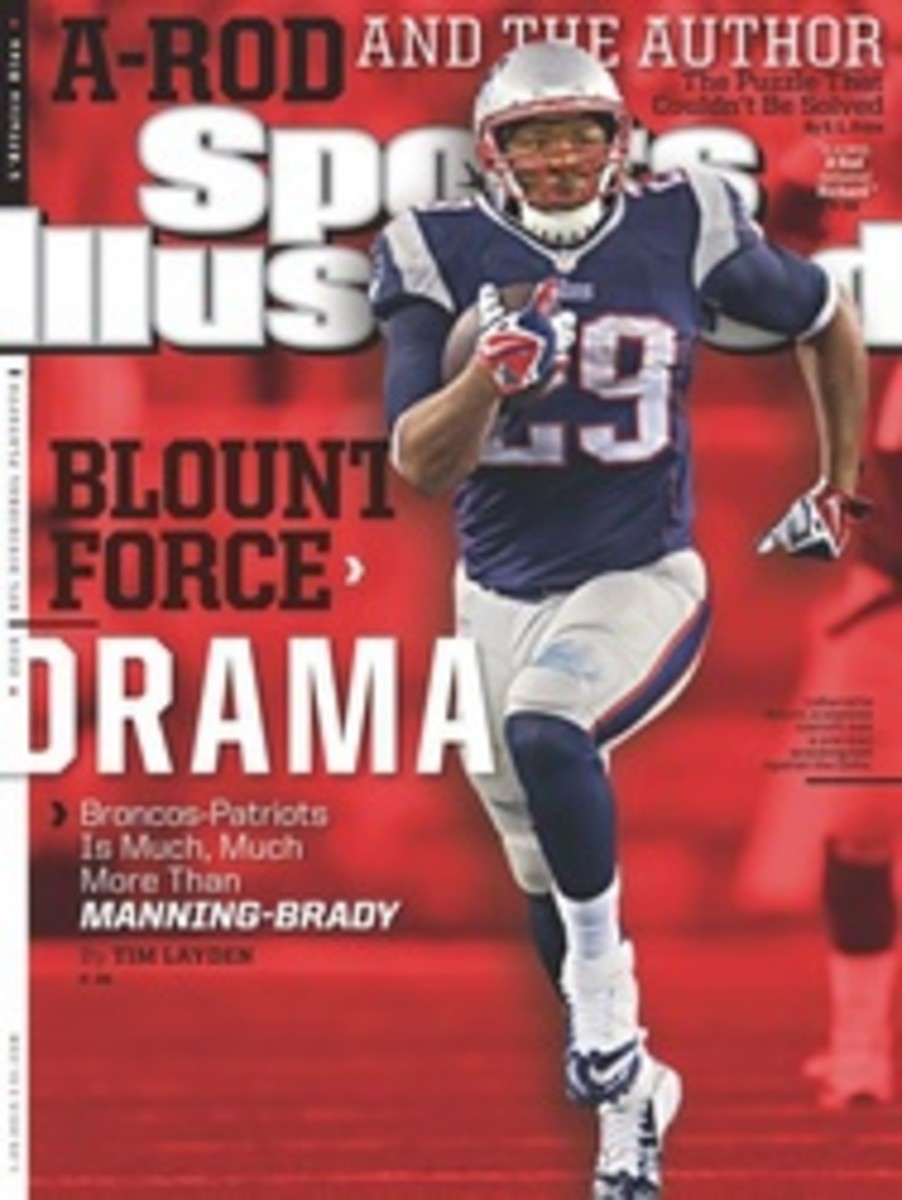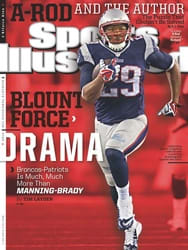
CRAZY LIKE A HAWK
LAST SPRING, following his third season in charge of the Seahawks, Pete Carroll finally had a defense built to his specifications. There was size at every position, notably cornerback, where Brandon Browner (6'4") and Richard Sherman (6'3") formed the NFL's tallest starting tandem. There was speed on every level, from ends Bruce Irvin and Chris Clemons to strongside linebacker K.J. Wright to free safety Earl Thomas. And there was success: In 2012, Seattle's defense led the league in points allowed and was fourth in yards ceded.
Still, Carroll wasn't satisfied. His motto is Always compete—another way of saying Never be complacent. So instead of waiting for the defense to improve with experience and familiarity, he and new coordinator Dan Quinn asked six of their 10 returning starters to line up at new positions or to play new roles.
To some longtime league observers this was insanity. But Carroll has always coached by feel as much as he has by percentages, and his gut told him that to reach the Super Bowl, change was necessary. That hunch proved prescient last Saturday during a gritty 23--15 home playoff win over the Saints, in which Seattle held the NFL's No. 4 offense to just eight points in the first 59:34. Carroll's redesigned unit had two fourth-down stops and a forced fumble that led to the game's first TD. It was a perfectly scripted performance that compensated for a career-low 103 passing yards from Pro Bowl quarterback Russell Wilson.
The reasoning for Carroll's overhaul was threefold: 1) to amp up the pass rush; 2) to stiffen against the run; and 3) to fit the system to each player's skills. GM John Schneider addressed the first point in free agency by signing end Cliff Avril and tackle Michael Bennett. Avril, who averaged just under 10 sacks his last three seasons with the Lions, would bring heat off the edge; and Bennett, coming off a career-best nine sacks with the Buccaneers, would provide interior disruption.
Next, Carroll and Quinn moved 6'4", 323-pound, space-eating end Red Bryant from the strong to the weak side, where he and tackle Brandon Mebane could clog running lanes on the non-tight end side of the offense; and they switched Irvin—a down lineman as a rookie, in 2012—to outside linebacker, where his speed would be an asset in coverage as well as on the rush. They asked Thomas and strong safety Kam Chancellor to swap high-low responsibilities, with the 6'3", 232-pound Chancellor spending more time near the line while the 5'10", 202-pound Thomas roamed deep. And Wright flopped from strong to weak side, as Clemons, Seattle's leading sacker a year ago, did the opposite.
The results have been stunning. The 2013 Seahawks were No. 1 in takeaways (39) and interceptions (28); and in points (14.4 per game), passing yards (172.0) and total yards (273.6) allowed. Much of the spotlight falls on the Legion of Boom secondary, but the front seven—or perhaps front eight, considering how frequently Chancellor plays near the line—contributes just as much.
This redesign wasn't without risk, as it required sacrifices by numerous players. For Irvin, there would be fewer chances to rush the passer; for Chancellor, fewer opportunities for interceptions; and for Clemons, more congestion en route to the QB as well as more duties as a run-stopper. "Numbers don't matter if you're trying to win a title," says Clemons, who had just 4½ sacks after averaging 11 the previous three seasons. "Everybody has to make sacrifices."
This hadn't been the Seahawks' way. Gus Bradley, who coordinated the defense from 2009 through '12 before leaving to coach the Jaguars, had favored fitting players to his scheme. This was awkward at times for Carroll, who preferred to identify individuals' strengths and build on them. He believes that a player will perform more confidently and effectively when he's less Jack of All Trades than Master of One.
"They're extremely simple in what they do," says Rams offensive coordinator Brian Schottenheimer. "They play two fronts, and the thing they do best is set the edges and contain everything in their base package. They put Chancellor to the strong side, right up on the line, and they put Irvin away from the tight end. They make sure nothing gets outside them."
SO, HOW to attack such a suffocating D? If the 49ers are to go to a second straight Super Bowl, they'll need to find an answer before Sunday's NFC championship game at CenturyLink Field. The game plan will no doubt focus on Mebane, a powerful 6'1", 311-pound nosetackle with a low center of gravity and a sudden first step. He's tough to move and excels at shedding blockers because of his hands, feet and eyes. He anticipates a play's direction by studying the area between the closest lineman's shoulder and his ear hole: If the blocker turns his near shoulder downward at the snap, Mebane expects a cut block; if he lifts it he expects a reach block, indicating a pass or run away from him.
With his arms of only average length, Mebane's hand placement is critical; if he's sloppy or fails to get his mitts inside a blocker's, his chances of repositioning an opponent diminish. He also must square his base as quickly as possible to hold his ground, which requires exemplary footwork. Mebane's ability to get lower than his blocker, establish leverage and command center-guard double teams in turn benefits the Seahawk on his outside shoulder, Bryant. When left one-on-one with a tackle, Bryant can use his power and 36-inch reach to push the line, clogging running lanes on the open side of the formation.
It will be critical for the 49ers to dislodge Mebane, thwart Bryant and run successfully on first down because Seattle's pass rush excels on second- and third-and-longs. The Seahawks' 15 sacks on second down ranked fifth in the league; their 20 on third down tied for seventh. CenturyLink is the league's loudest outdoor venue, and nothing revs up the 12th Man like long-yardage situations. The Rams were so concerned about this before their Week 17 game in Seattle that they used only four to six "checks" at the line of scrimmage. They had 22 checks when the two teams met in St. Louis nine weeks earlier.
When it comes to those passing situations the most disruptive rusher is Bennett, who racked up a team-leading 8½ sacks through his quickness, deceptive strength and relentless pursuit. He's also extremely versatile; he can line up over the center, guard or tackle—or sometimes wide of the tight end. Against the Saints he filled each of those roles on one series.
Wherever Bennett lines up, stop him and you still have to deal with an onslaught of bodies. Clemons has the unit's best burst off the snap; Avril is crafty with counter moves; Irvin is a year removed from eight sacks, even if he is rushing less often this year; and rotation tackles Clinton McDonald and Tony McDaniel provide interior pressure.
Which isn't to say that everyone was happy about this rotating from the start. Some players grumbled. But Quinn, who firmly believes "you can never have enough rushers," wanted to ensure that his defense was at its best late in games and late in the season. That was an issue a year ago when Seattle produced just two sacks in two playoff games, including a 30--28 divisional round loss to the Falcons. "You need rushers to finish the game," Quinn explains. "One of the things we focus on is, Can we get the quarterback off his spot? Can we get him outside [the pocket]? Sacks are awesome, but we also ask, How many hits did we get on the QB? We want to affect him."
The leaguewide passer rating in 2013 was 86.0. Against the Seahawks it was 63.4, lowest among all 32 teams. And for the Niners' Colin Kaepernick it was 41.7 in two games against Seattle, with one TD and four interceptions—which is one reason that Schottenheimer believes Sunday's game will come down to San Francisco's third-ranked rushing attack against Carroll's improved front. "To beat them up there, you've got to get big: two tight ends, two backs. That simplifies the defense," says Schottenheimer. "Pound them, wear them down. If you play a finesse game (sweeps and end-arounds), they're all fast and the play gets strung out sideways; you've got no place to go. You have to go right at them—which is easier said than done."
Follow @theMMQB
"NUMBERS DON'T MATTER IF YOU'RE TRYING TO WIN A TITLE," SAYS CLEMONS. HE SHOULD KNOW: HE HAD 4½ SACKS AFTER AVERAGING 11 THE PAST THREE YEARS.
PHOTO
Photograph by ROD MAR FOR SPORTS ILLUSTRATED
SEA CHANGE With its front seven or front eight—eight!?—the NFL's top-ranked D has grown more stout against the rush and applied more pressure on quarterbacks. Don't believe the hype? Just ask the Saints.
PHOTO
ROBERT BECK/SPORTS ILLUSTRATED (AERIAL SHOT)
VICIOUS CIRCLE After swarming and stoning New Orleans's running game, the Seahawks will turn their bad intentions to Kaepernick (below), whom they sacked five times in two regular-season games.
TWO PHOTOS
ROD MAR FOR SPORTS ILLUSTRATED
[See caption above]

